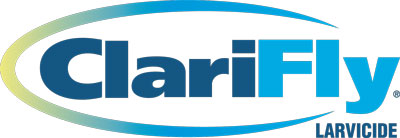
When fly infestations are left untreated, they can cause significant harm to your livestock. Flies have the ability to transmit diseases, reduce weight gains among animals, and cause severe irritation. To ensure the well-being of your animals and your bottom line, it is crucial to implement an effective fly management program. However, the initial task involves identifying the specific types of flies and understanding how they operate.
House fly
The house fly can be found where it feeds — on human food, animal waste, and garbage. This pest breeds quickly and efficiently with females depositing 150 eggs at a time. Because of this, populations can increase dramatically in a short period.
You’ll know this fly by:
• Non-metallic dull grayish color
• Four distinct stripes on the thorax
• Pale yellowish abdomen
Stable fly
This biting fly isn’t picky about where its next blood meal comes from. As a result, stable flies will enjoy the blood of both animal and human hosts, causing stress on your herd and employees. Cleaning up grass clippings, compost, and fecal materials reduces the breeding grounds of these insects.
You’ll know this bloodsucking fly by:
• 1 mm in length
• Distinct piercing-type mouthparts
• Dull-gray color similar to the house fly
• Checker-board pattern on the abdomen
Lost production
Flies are not only an annoyance, but they also pose a threat to animal health, which affects your bottom line. Stable flies will administer a painful bite and irritate cows during resting, feeding, and milking. Research shows that high populations of stable flies can lower milk production by 15 to 30 percent. Losses from these painful pests alone are estimated to cost $360 million per year in the United States.
Spreading disease
While the house fly is not a biting pest, it poses a threat to the bottom line of a dairy operation. House flies lay eggs in cow manure and breed quickly. These flies spread more than 65 diseases to cows, including pinkeye and mastitis. Given the role flies play in cow health, implementing proper practices and preventative fly control strategies is key to protecting dairy cows from flies.
Worker impact from flies on a dairy
Flies can be a nuisance to human workers on a dairy and can interrupt productivity. In worst-case scenarios, they can potentially even lead to faster turnover among workers. Managing adult flies on an operation can also require manpower that could be better spent on the dairy. To most effectively and efficiently control flies on a dairy operation, consider a comprehensive fly control program built on ClariFly® Larvicide.
Integrated pest management (IPM) program
Once you have identified the flies around your herd, the next step is to act upon your knowledge. Implementing a proactive integrated pest management (IPM) program incorporating ClariFly® Larvicide will help prevent fly populations from rapid growth. ClariFly® Larvicide is a feed-through fly control solution that relies on the cows to pass the product through manure, requiring no additional effort by workers. And because its unique mode of action targets flies at the larval stage, it prevents adult flies from emerging and needing to be controlled.
Protect your dairy cows from these harmful flies by implementing ClariFly® Larvicide into your cow’s feed to ensure continuous fly control. Visit CentralFlyControl.com to find a sales representative near you to discuss how to implement ClariFly® Larvicide into your mineral supplement.
